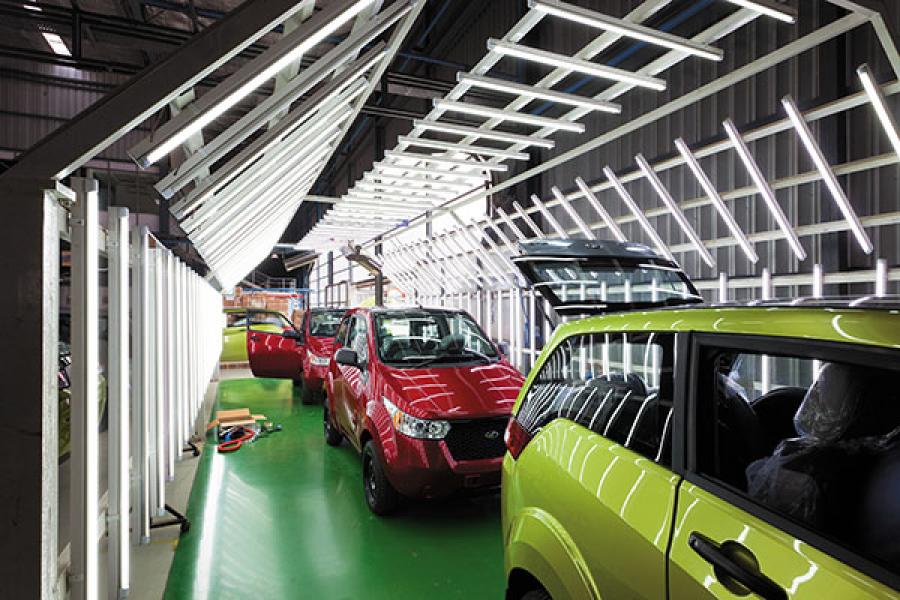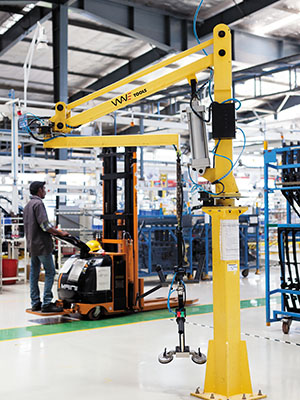
Inside the Reva factory
With solar-powered units inspired by trees, vertical gardens and noiseless technology, the Mahindra Reva factory resembles a futuristic retreat rather than a manufacturing facility
No one perspires at the mahindra reva plant. Outside, however, Bangalore—otherwise envied for its salubrious weather—is an uncomfortable 360 celsius. There are no fans running along the assembly line. There is no need. The aerodynamic structure of the car-manufacturing facility allows fresh air to flow through continuously. It is obvious at first glance. This isn’t a typical automobile plant. Unlike the usual A-framed structure supported by huge columns, the Reva facility gives the impression of a futuristic retreat. The spaceship-inspired architecture comprises triangular units, the ends of which are knotted to form an aerodynamically shaped truss that touches the least possible ground space—the entire formation is perched atop the surface without bullying the earth.
At the plant’s entrance is a solar-powering hub inspired by trees. Noiseless cars re-energise under the shade of its panels that are built to resemble leaves. Further into the unit, a vertical garden replaces the traditional reception area. There is a serenity that is unusual for a production workplace.
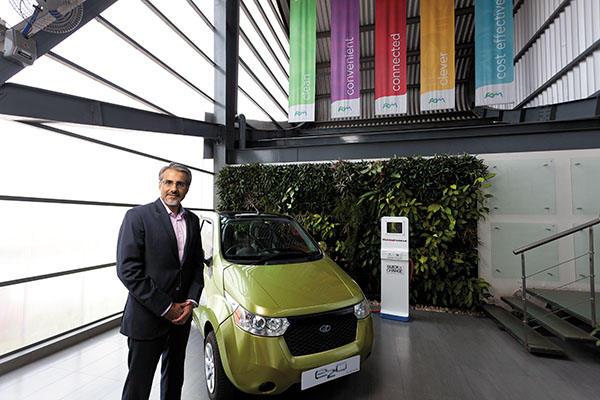
But less factory, more haven, is how Chetan Maini, CEO, Mahindra Reva Electric Vehicles, envisioned the Reva manufacturing unit, with an abundance of fresh air and natural light, a space where employees feel good about their work environment. “It couldn’t be just about the car we make. All aspects of our processes, design and manufacturing had to be a reflection of our commitment to clean technology,” says Maini. “The idea was to go back to the way we design cars, and return to the drawing board to apply the same philosophies.”
Finding the right architect was the first hurdle. Maini’s brief was clear: The design had to reflect the cutting-edge technology that Reva used in its eco-friendly cars. “Green does not have to cost more, and can be replicable,” he tells ForbesLife India during a tour of the facility. Bangalore-based firm Atelier D’Arts and Architecture landed the commission. What impressed Maini was that every time he gave them a brief, Atelier responded with more than even he had imagined.
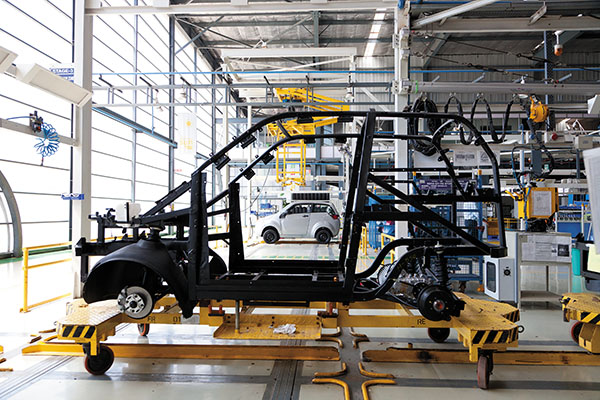
Execution was going to be a challenge, though. For instance, Mahindra Reva wanted to run a tight ship and minimise land wastage. It chose a four-acre plot even though most manufacturing units are up to 10 times larger. Atelier came up with a design that restricted the actual production floor size, for a capacity of 30,000 cars per annum, to about 1 lakh sq feet.
To marry Maini’s ideas of technology and green, Tony Kunnel, co-founder, Atelier, drew up a structure that would respect the ground it was built on without imposing itself on it. But that was still just barely scratching the surface. Clean technology and minimalism needed to be factored into every minute detail of the space, its construction, its operation.
They started by ensuring that the materials were locally sourced—as far as possible—to reduce the carbon footprint. Reusable resources were brought in from adjacent locations and the land that had been excavated was preserved for re-use. The plant was developed around the five natural elements: Air, space, fire, water and earth. These involved practices such as fresh air ventilation, noise insulation features, solar-power generated electricity, rain-water harvesting, soil erosion prevention and waste recycling.
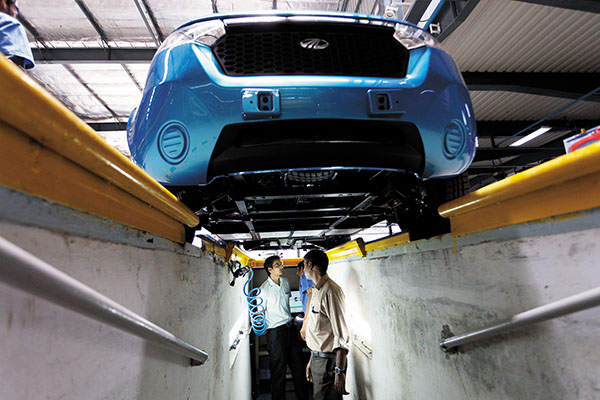
Natural ventilation, cooling and lighting were top priority. Engineers and architects realised they would have to switch the air twice every hour. To do that, they needed an energy-guzzling airflow system that comes at an astronomical cost.
Maini was determined not to allocate power to re-circulate air. “Figure it out,” he told the team. Less than two months later, they returned with a solution—one that not only halved cost, but also saved energy. The roof is made of material that absorbs heat and industrial noise. It accommodates solar panels on its surface so that the plant can generate 70 to 80 percent of its future power needs. Currently, it produces 40 percent.
Walls are made of poly-carbonate sheets that allow light to filter through, but block the glare from sunlight. The positioning of LED lights ensures that energy consumption is reduced by 40 percent when lighting is necessary.
When Maini envisioned this facility, he was looking not just for an industrial blueprint but also an expression of his philosophy of clean technology. He wanted to capture in brick and mortar the essence of the car that would drive out of it. He imagined a plant that scrapped the conventional idea of a ‘plant’ altogether. This called for innovation not only at the architectural and designing stage, but a rethink on the conventional production line.
The design team presented an alternative to the linear model of manufacturing, where you start at one point and end at another. It follows a modular station concept, which is an advanced assembly line designed to improve productivity and efficiency. This involves assembling different components of a vehicle such as the chassis and panels at a station by a group of shop-floor workers before moving on to the final assembly line. This system also helps them tide over demand and supply by not imposing a forced pattern.
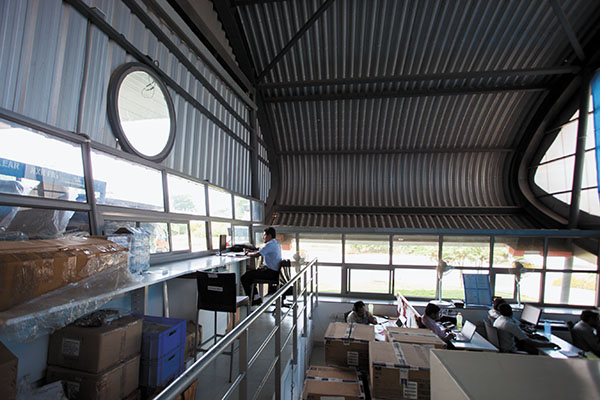
Reva scrapped the car-painting unit, which is a huge contributor to pollution. Instead, body panels made of high-quality colour-impregnated plastic are assembled. After years of experimentation, advance-adhesive technologies were brought in to reduce power consumption and noise pollution caused by welding machinery. Panels are bonded using compressed air pressure. The adhesive technology, which is becoming popular in automotive production, is used on different components of the car including the chassis.
“In a typical assembly line, the noise from automated processes is shocking, and so are the emission levels. There is simply no need for all that here,” says Maini, who founded Reva Electric Car Company in 1994 as a joint venture between the Bangalore-based Maini Group and the US’s Amerigon Electric Vehicle Technologies. In 2010, Mahindra Group acquired a majority stake in the car company and renamed it Mahindra Reva Electric Vehicles.
This production unit, the first automobile facility to get a platinum rating from the Indian Green Building Council, produces India’s only electric car. The Mahindra Reva has one of the world’s largest deployed fleets of electric cars with customers in 24 countries. Its international rivals include Nissan’s Leaf, which dominates the global electric car market, Chevy Volt by General Motors, Toyota’s Prius Plug-in and Model S by Tesla.
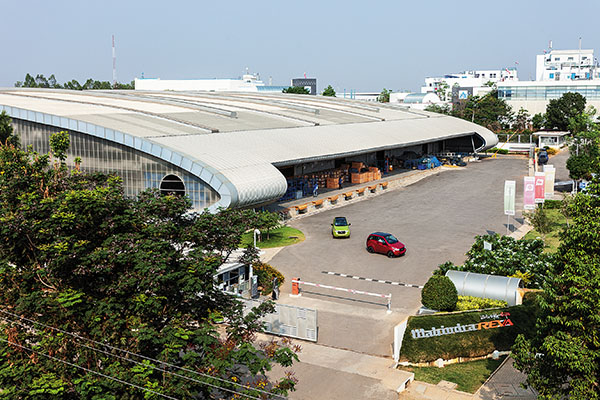
Mahindra Reva has pushed the envelope on what a factory should be. And in doing so, it has found that the greatest challenge to running a set-up such as this is employing people who are willing to challenge preconceived notions of how a plant should be run. Most of the 350 to 400 employees are people who have never worked at assembly line car facilities. The company spends two to three months training recruits, who are then absorbed after a certification process. Maini says the company’s efforts have paid off; attrition rates are lower than at other plants. Women employees make up 15 to 20 percent of the total workforce on the shop floor.
For all the thought and technology that has gone into this unit, the underlying principle is simplicity. It took them barely six months to build the plant. Kunnel sees Maini as a visionary, a man who is not afraid of realising his dreams, even something as futuristic as inventing a flying car. “I’ve let out Chetan’s secret of beating Elon Musk and [Richard] Branson to [building] a solar-powered space voyager.”
(This story appears in the May-June 2014 issue of ForbesLife India. To visit our Archives, click here.)
-
 G Dakshina Murthy
G Dakshina MurthyAbsolutely admirable, hugely positive commitment. People like Chetan Maini are the true leaders. I hope and wish that all businessmen in this country would emulate this commitment. The only way this initiative is fully recognized and rewarded is to make the effort sustainable by more people opting to buy Reva cars. (I am buying one now. In fact, a second one. I have been using the earlier two-seater Revai for five years now.) It is my very strong recommendation that more and more people, especially in cities like Bengaluru, should go for the Reva car.
on Jul 16, 2014-
 A.k.shivaswamy
A.k.shivaswamyReva car is one of best things that has happened in this country. Since Chetan has come out of M & M, he should revive the old maini car which is a gift to senior citizens and ladies who have no other vehicle to cater to their demands and needs.
on Oct 24, 2015
-

